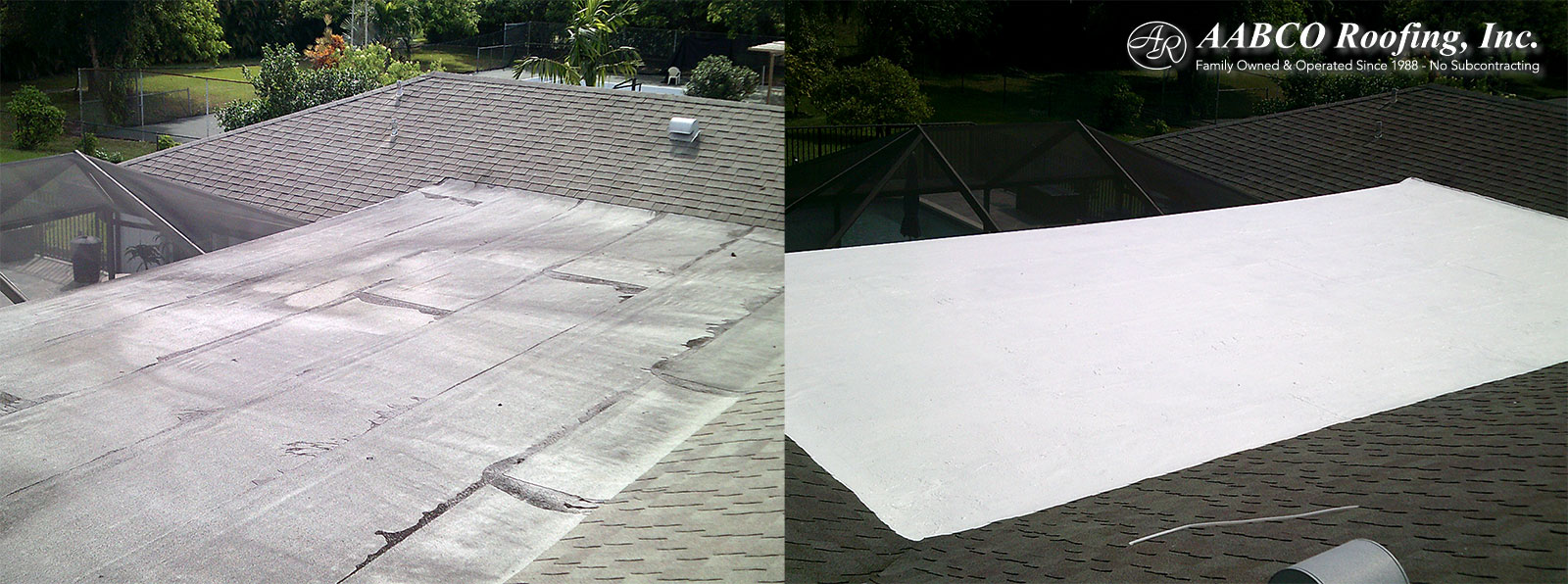
Various Types of Flat Roofs Available
Flat roofs are an important aspect of building practice, because of the utility which comes with using them. A roof is technically flat if the pitch has less than a 1.5” on 12” (1.5:12).Flat roofs provide a less expensive, reliable option for covering buildings with a vast surface area such as large commercial and industrial structures. Flat roofs can also double as utility areas as well, allowing for air conditioning units, satellite dishes and other important pieces of equipment to be installed there, with little to no effort. They also allow easy access to this equipment and other parts of the building.
BUR: Built-Up Roofing
The original form of flat roofing was the built-up roof or BUR for short. BUR roofs have been around in the US for over a hundred years. A common name for them is a “tar and gravel” roof. They are composed of alternating layers of bitumen and a reinforcing fabric, called plies. Some roofs, depending on the deck type may also require insulation boards which are adhered with fasteners and/or hot asphalt.
The bitumen is normally asphalt or coal tar, both which requires a kettle to apply. There are also cold applied adhesive, self-adhered versions. The reinforcing fabric is typically fiber glass or organic mats. Once a sufficient number of layers are deposited, the whole roof is weighed down by gravel or a similar mineral substrate.
BUR roofs are cost efficient with the initial installation being the only large cost, whereas maintenance and repairs are quite manageable. The lifespans of these roofs if properly maintained are considerably long.
Modified Bitumen
The bitumen is plasticized by mixing a membrane rubber into it and then it’s rolled into sheets. The reinforcing sheets are still needed, but the number of plies needed is much less, usually three. This combines the practicality and ease of install of membrane roofs and the durability of BUR roofing
There are a few detractors when using a BUR or Modified roof. There are the toxic fumes which are released only when hot asphalt is applied and the weight of the tar and gravel can be prohibitive. There are eco-friendlier options, Which the next styles promote.
Membrane Roofing: Thermoset and Thermoplastic (TPO)
Membrane roofs are split into two categories, thermoplastic and thermoset. Both use sheets of synthetic rubber, but the application techniques are slightly different. The synthetic rubber comes in long sheeting that is 45 to 60 mils thick. They are applied in one layer and are adhered to the building using batten bars or adhesives.
The difference between the thermoplastic and thermoset is how the sheets are bonded once they have been laid down. Thermoset sheets are chemically bonded, either vulcanized or using an adhesive. Thermoplastic is bonded using a torch or heat gun, though this can release toxic fumes and should not be done on an inhabited building.
The benefits of a membrane roof over a BUR roof include, a much thinner roof, it is easy to find and patch leaks, the seams are as strong as the rest of the sheet and it doesn’t require ballast to hold it down.
Polyurethane Foam and Silicone Coating
Foam roofing is another process that is not only eco-friendly but cost effective and more importantly, long lasting. Foam roofing has many advantages over the traditional roofing methods. It’s durable, lightweight and can be used on virtually any surface allowing for use on commercial and residential roofs. Its applied in liquid form which converts to foam and creates a single membrane that covers the entire roof surface. Its seamless preventing the majority of leaks that are found with traditional roofs.
Once the foam has dried, a “Class A” Fire rated Silicone coating is applied over the foam to create a seal and protect the roof from the moisture, UV Rays and other environmental factors. The end result is a long-lasting. efficient, resilient, eco-friendly roof.
Silicone Coating – Alternate to Reroofing
Silicone Coating is a waterproof, elastomer coating that can be rolled or sprayed over the current roof system that
renews and’s extends the life of the roof by protecting it from the harsh environment and can be used on flat, BUR, TPO, tile and shingle roofs.
If you do decide to reroof your flat roof, this should be a good guide on what your options are and where to go from here.
